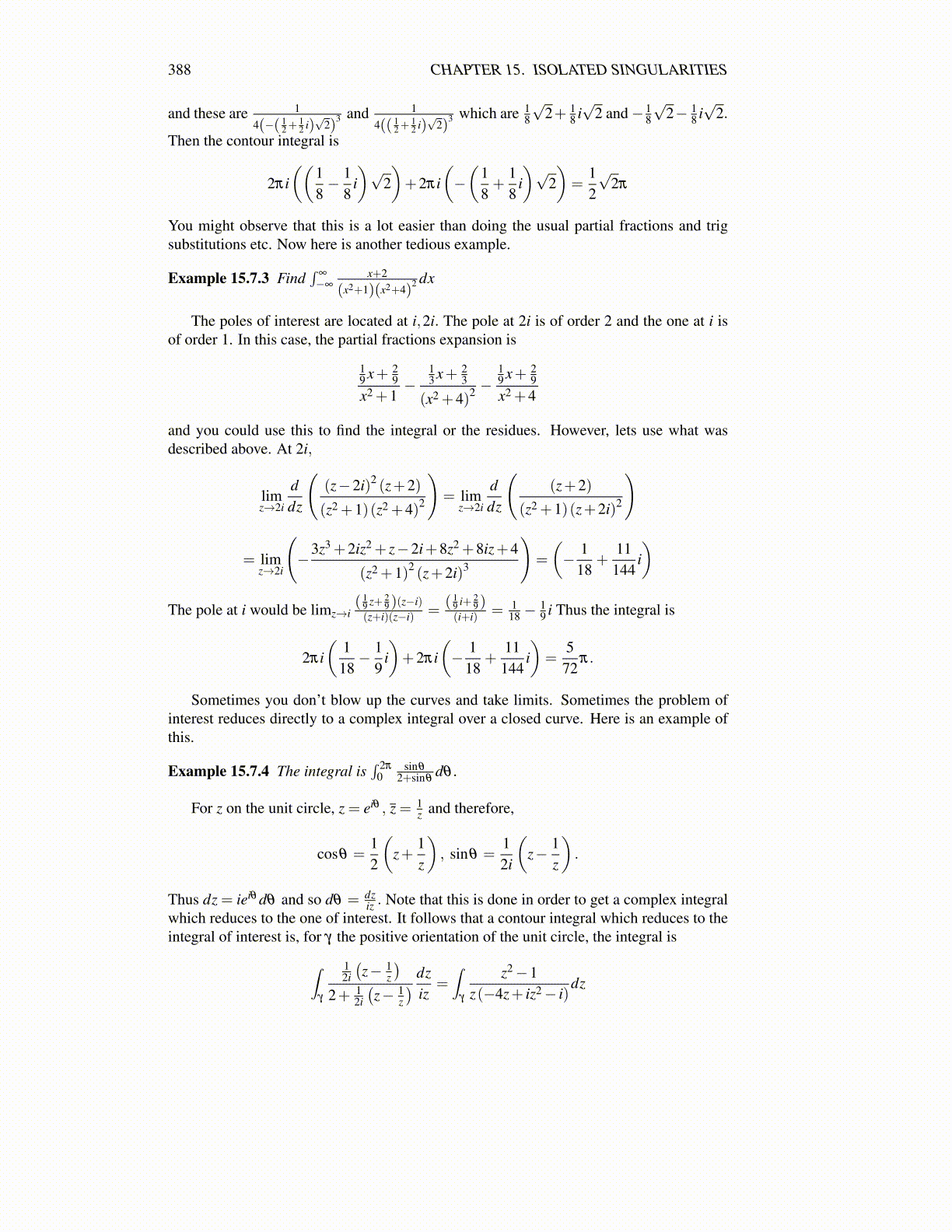
388 CHAPTER 15. ISOLATED SINGULARITIES
and these are 14(−( 1
2+12 i)√
2)3 and 1
4(( 12+
12 i)√
2)3 which are 1
8
√2+ 1
8 i√
2 and− 18
√2− 1
8 i√
2.
Then the contour integral is
2πi((
18− 1
8i)√
2)+2πi
(−(
18+
18
i)√
2)=
12
√2π
You might observe that this is a lot easier than doing the usual partial fractions and trigsubstitutions etc. Now here is another tedious example.
Example 15.7.3 Find∫
∞
−∞
x+2
(x2+1)(x2+4)2 dx
The poles of interest are located at i,2i. The pole at 2i is of order 2 and the one at i isof order 1. In this case, the partial fractions expansion is
19 x+ 2
9x2 +1
−13 x+ 2
3
(x2 +4)2 −19 x+ 2
9x2 +4
and you could use this to find the integral or the residues. However, lets use what wasdescribed above. At 2i,
limz→2i
ddz
((z−2i)2 (z+2)
(z2 +1)(z2 +4)2
)= lim
z→2i
ddz
((z+2)
(z2 +1)(z+2i)2
)
= limz→2i
(−3z3 +2iz2 + z−2i+8z2 +8iz+4
(z2 +1)2 (z+2i)3
)=
(− 1
18+
11144
i)
The pole at i would be limz→i( 1
9 z+ 29 )(z−i)
(z+i)(z−i) =( 1
9 i+ 29 )
(i+i) = 118 −
19 i Thus the integral is
2πi(
118− 1
9i)+2πi
(− 1
18+
11144
i)=
572
π.
Sometimes you don’t blow up the curves and take limits. Sometimes the problem ofinterest reduces directly to a complex integral over a closed curve. Here is an example ofthis.
Example 15.7.4 The integral is∫ 2π
0sinθ
2+sinθdθ .
For z on the unit circle, z = eiθ , z = 1z and therefore,
cosθ =12
(z+
1z
), sinθ =
12i
(z− 1
z
).
Thus dz = ieiθ dθ and so dθ = dziz . Note that this is done in order to get a complex integral
which reduces to the one of interest. It follows that a contour integral which reduces to theintegral of interest is, for γ the positive orientation of the unit circle, the integral is
∫γ
12i
(z− 1
z
)2+ 1
2i
(z− 1
z
) dziz
=∫
γ
z2−1z(−4z+ iz2− i)
dz